How To Draw Spiderman Into The Spider Verse
Spider-Homo™: Into the Spider-Verse

Phil Lord and Christopher Miller, the artistic minds behind the films CLOUDY WITH A CHANCE OF MEATBALLS and THE LEGO Flick, brought their unique talents to a fresh vision of SPIDER-Human being: INTO THE SPIDER-VERSE, with a groundbreaking visual style that is a offset of its kind. SPIDER-Man: INTO THE SPIDER-Poesy follows the adventures of Brooklyn teenager, Miles Morales, and the limitless possibilities of the Spider-Poetry, where more than one can wearable the mask. The movie is directed by Bob Persichetti, Peter Ramsey and Rodney Rothman and produced past Avi Arad, Amy Pascal, Phil Lord, Christopher Miller and Christina Steinberg.
Click here to download the total Sony Pictures Imageworks crew list every bit a .PDF
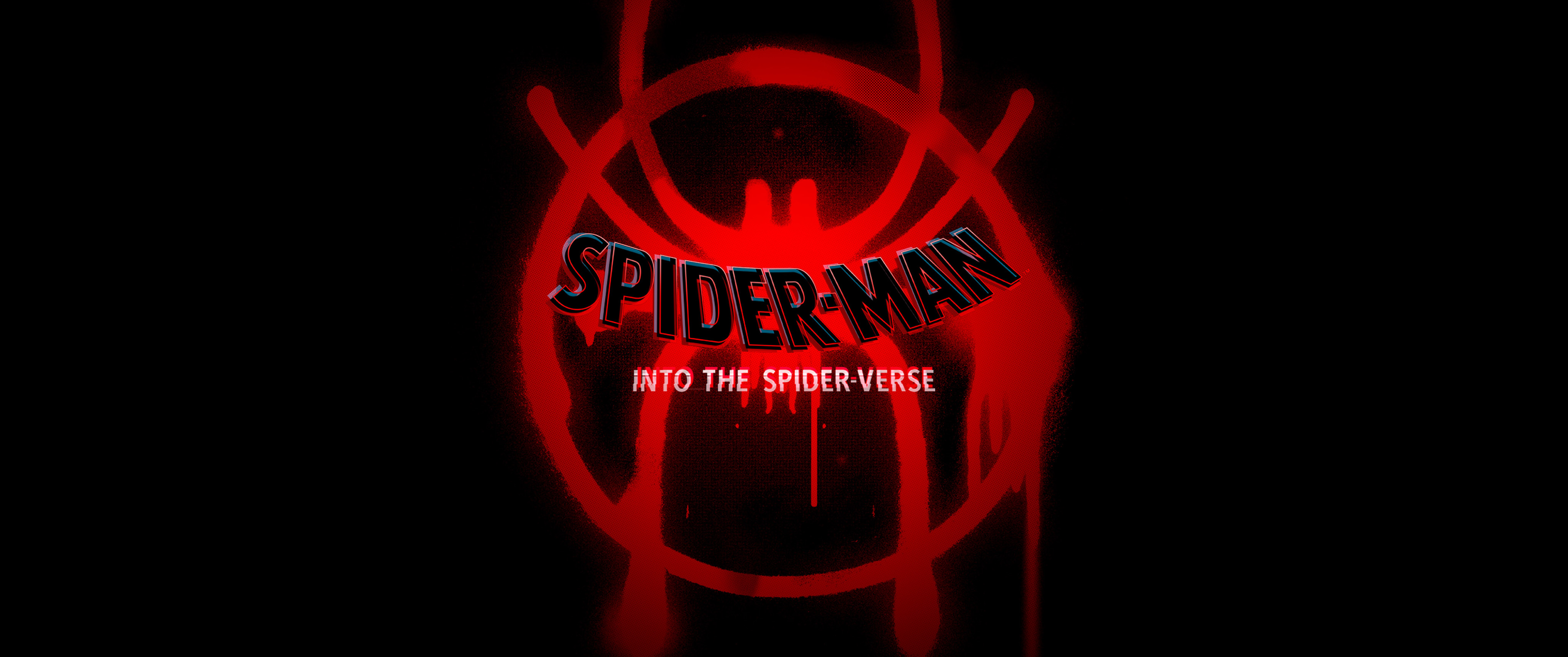
A New Visual Language
Making the first-e'er animated Spider-Human characteristic was a chance to do something new and exciting, an invitation to look for a new visual style inspired by the expect of comic books. The entire wait of the film was driven by artist's intention in which the design and style was given more than importance than accuracy or realism. Artists were encouraged to experiment and effort new ideas without business organisation for how it might break the pipeline. The hand of the artist is visible in every shot including imperfections.
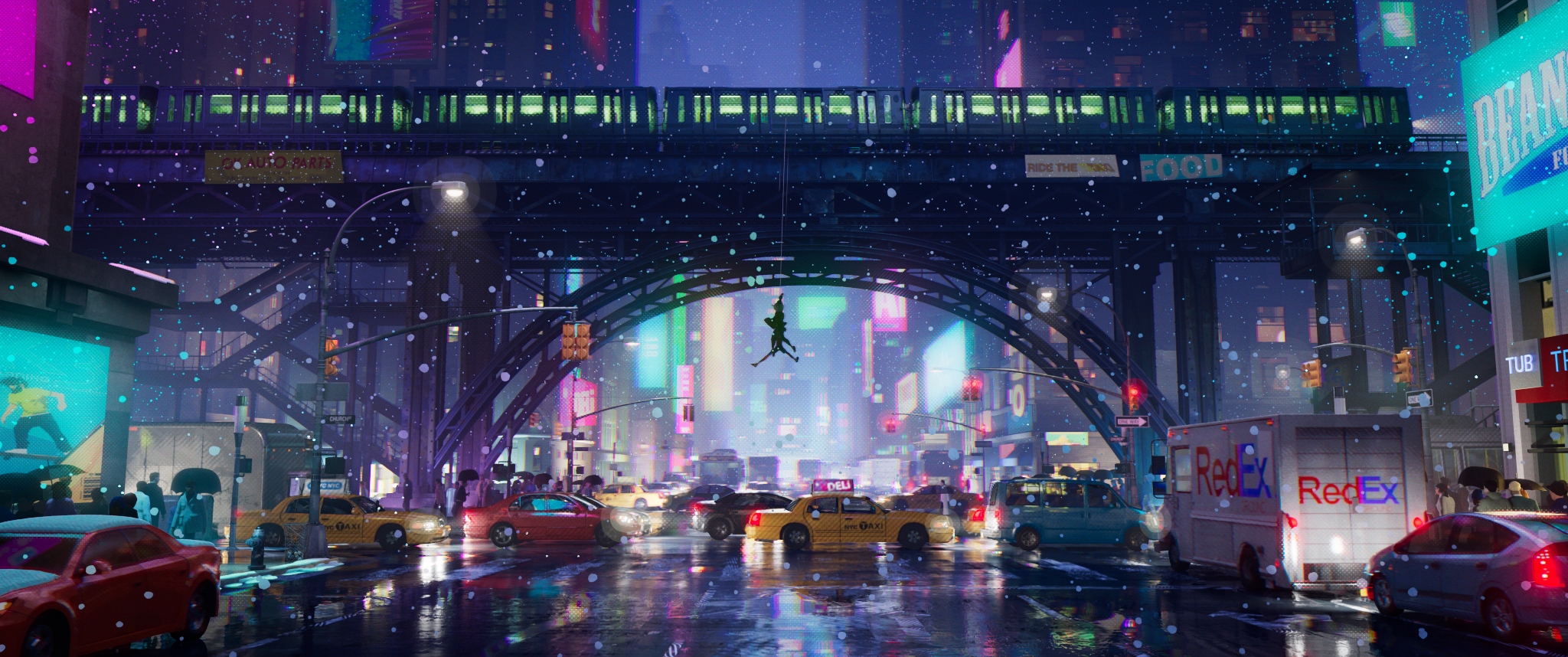
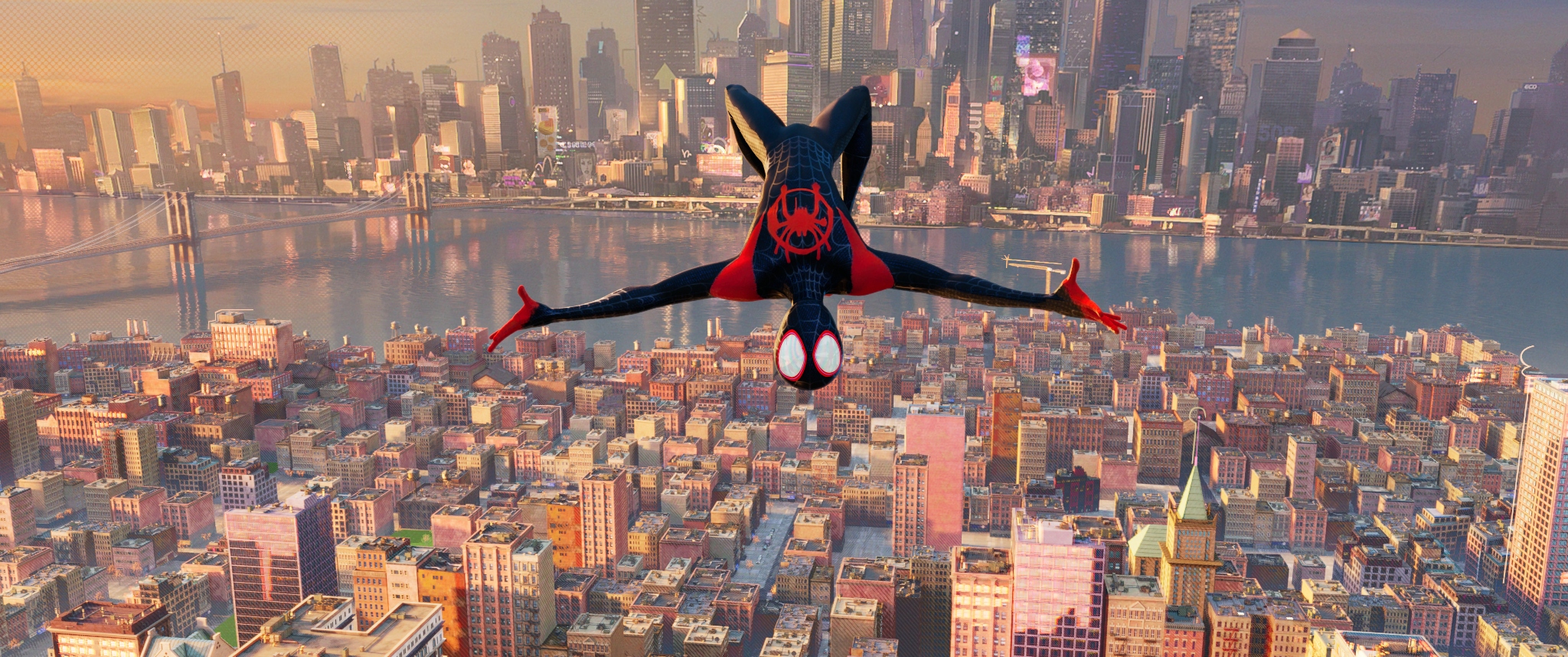
"If it ain't broke, break it!"
- Danny Dimian, VFX Supervisor
In order to accommodate working in this new visual style, non only was new engineering adult, but changes to both the pipeline and workflow were required. Various new techniques were developed including the rigging and animating of facial line work, 2D hand-drawn effects and stylized rendering. Every department at Imageworks was asked to reconsider what it means to make an animated characteristic in the spirit of this comic book manner.
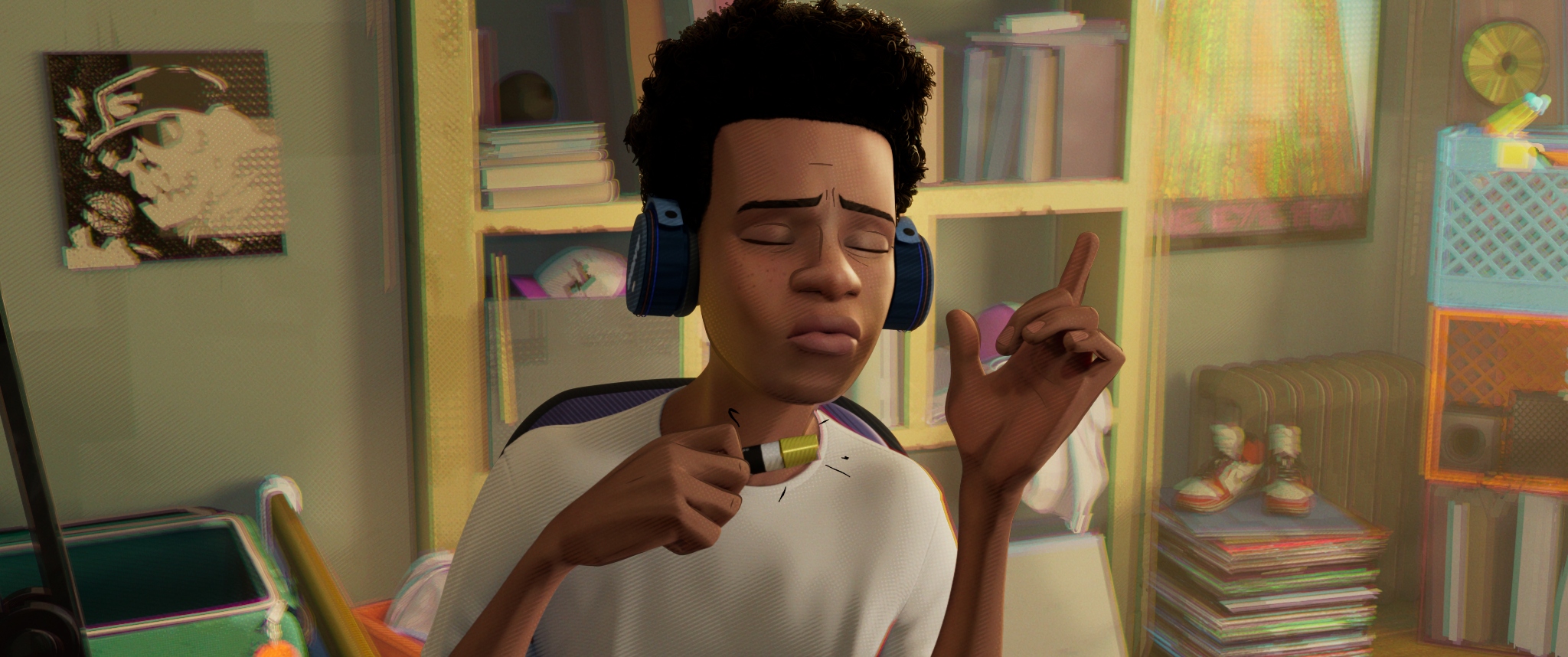
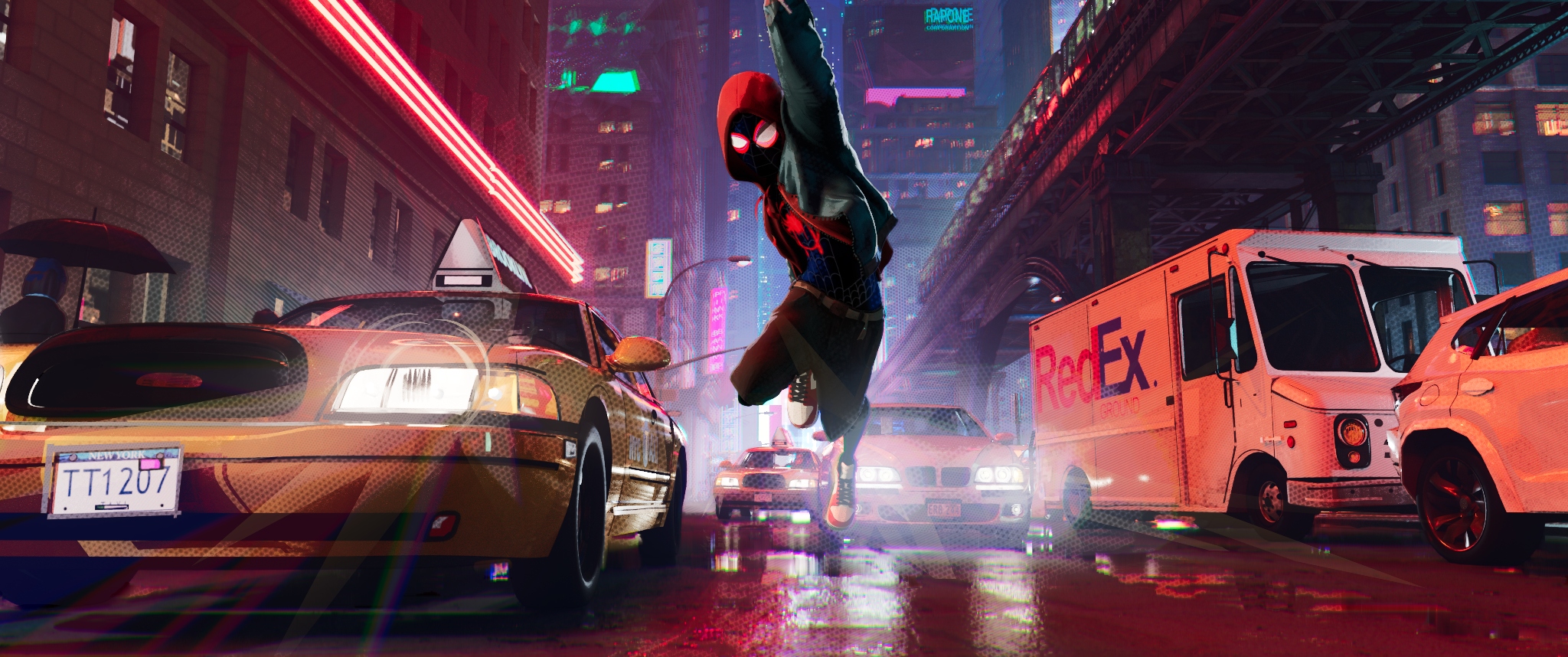
Drawing On Emotion
Line work became a crucial part of the production, and likewise aided in linking the film to an analogy and comic volume style. Our creative challenge was to find a balance between heavily stylized design and emotional entreatment. Nosotros wanted to make sure our character performances were emotional so audiences could really connect with our heroes.
The combination of drawing and and then animating facial lines was vital to how expressive our characters could be. It was these strong emotional character performances that allowed u.s. to push the style and await of the entire movie.
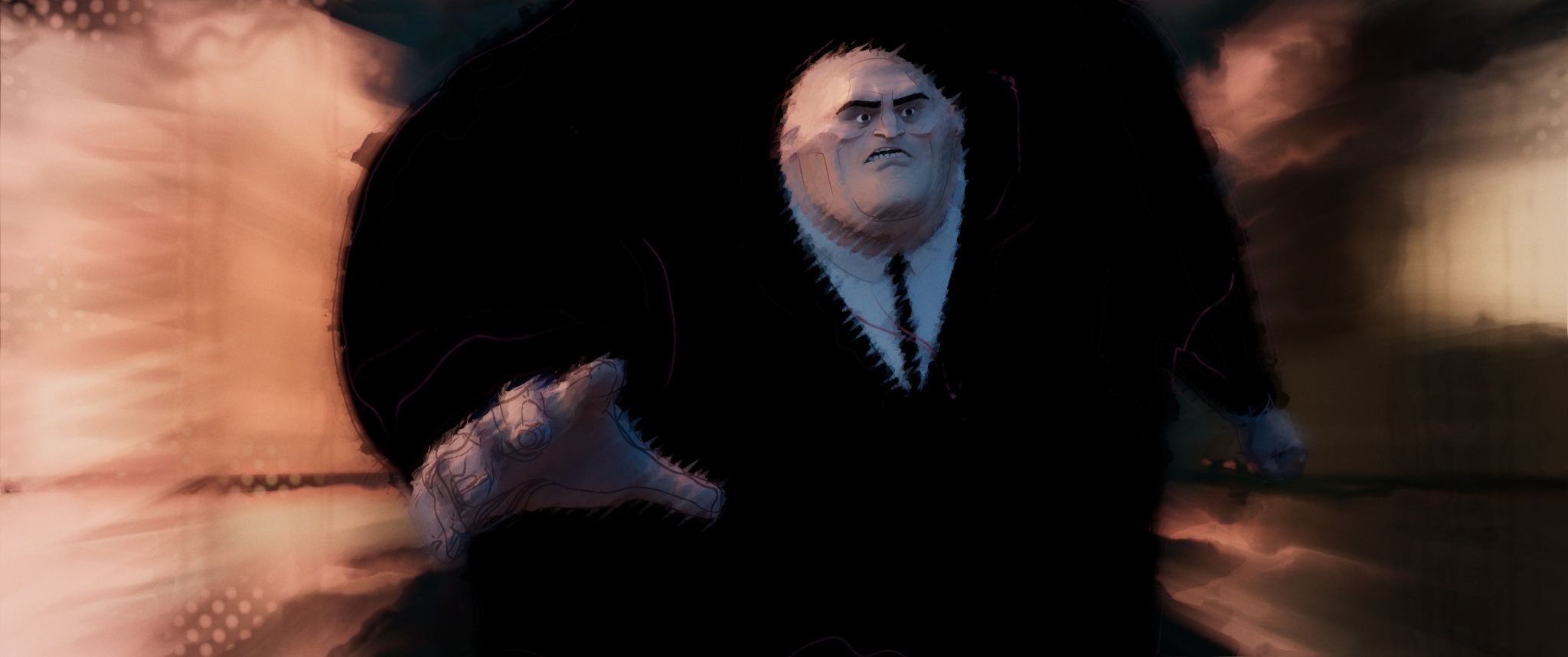
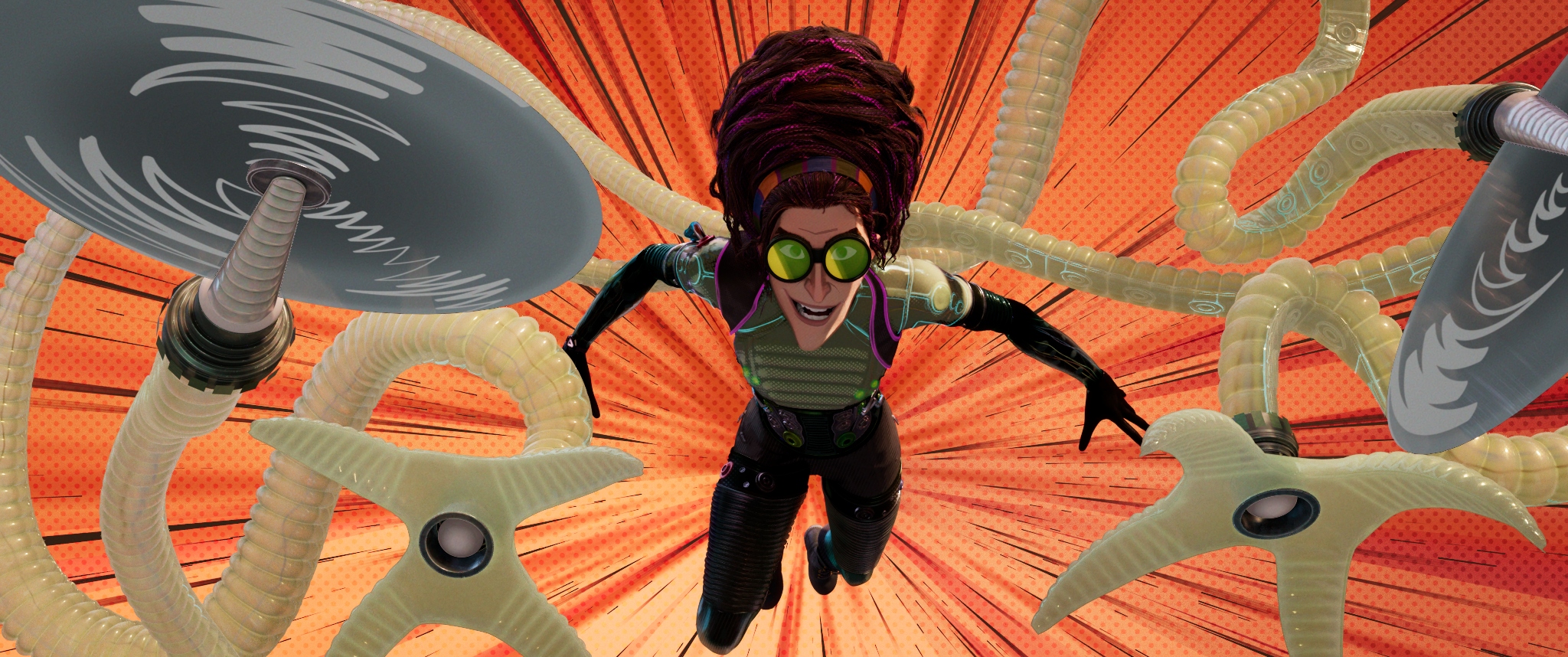
In order to do this nosotros developed a new line drawing system in which an artist could depict lines on a grapheme the mode an illustrator might. These lines were then converted to geometry and rigged for blitheness. Other lines that were based on geometry such as those fatigued on the nose, ears and hands were more predictable and required less hand keyframe blitheness. This predictability allowed us to apply machine learning algorithms to automate the blitheness of these lines.
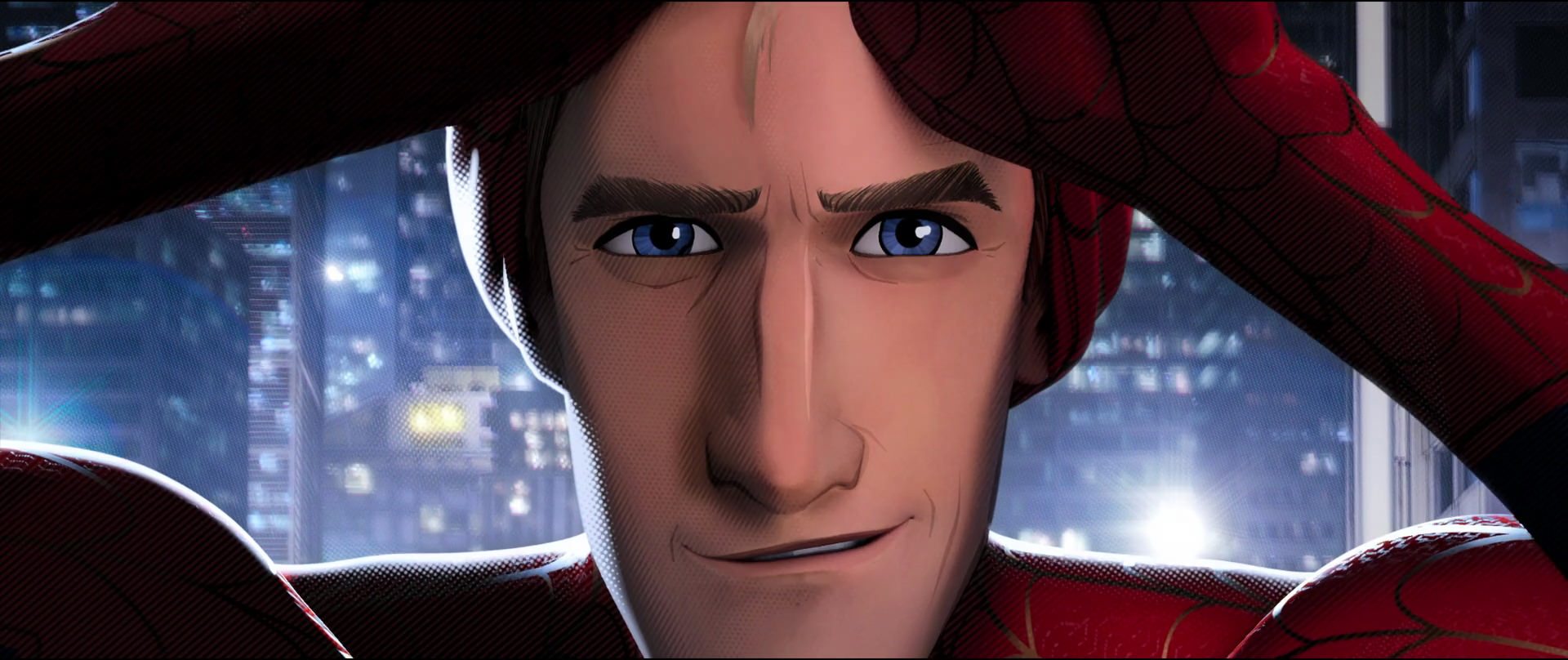
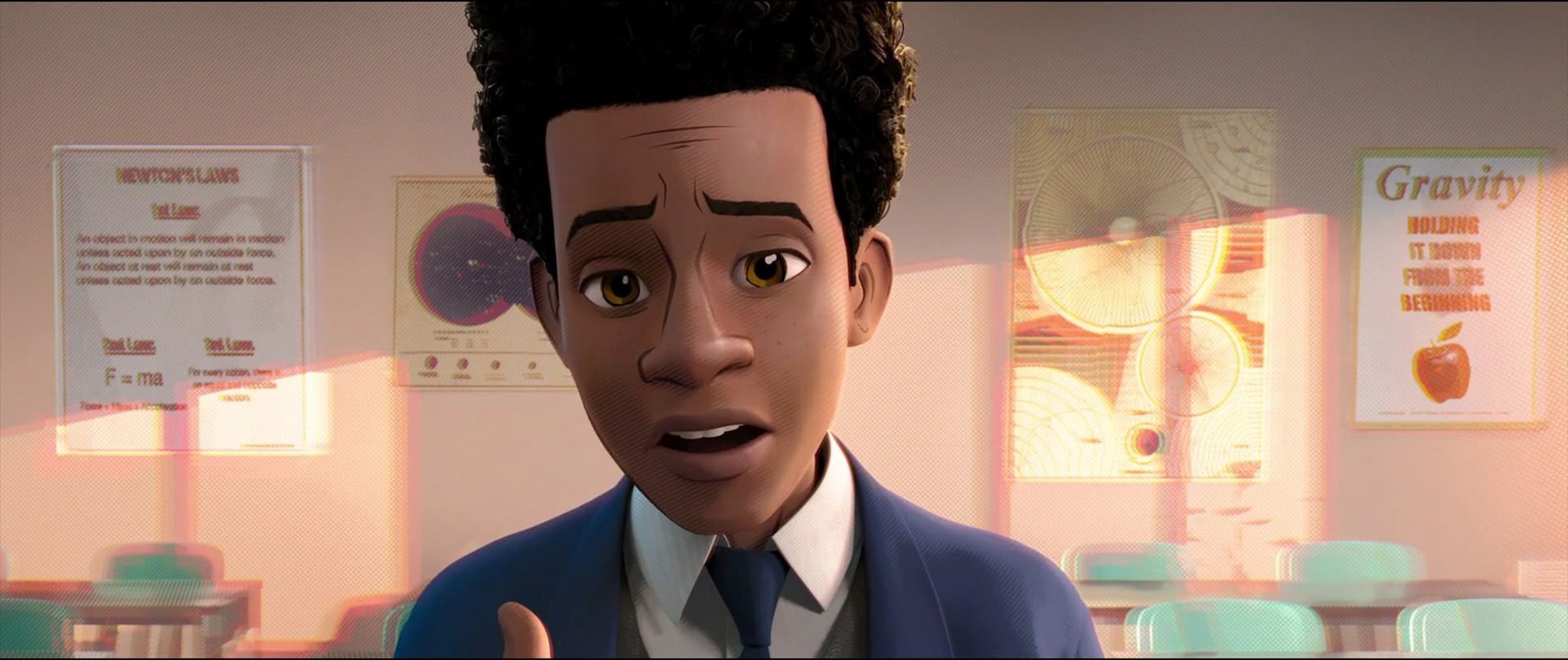
With each adjustment an artist made to these lines, the system learned and got better at predicting how to describe the lines for the next frame. This automation saved time and allowed animators to really focus on the functioning of the characters.
The utilise of line work was used throughout the moving picture. Even hard surface models had lines built into them, and often boosted lines were added to the environments in compositing.
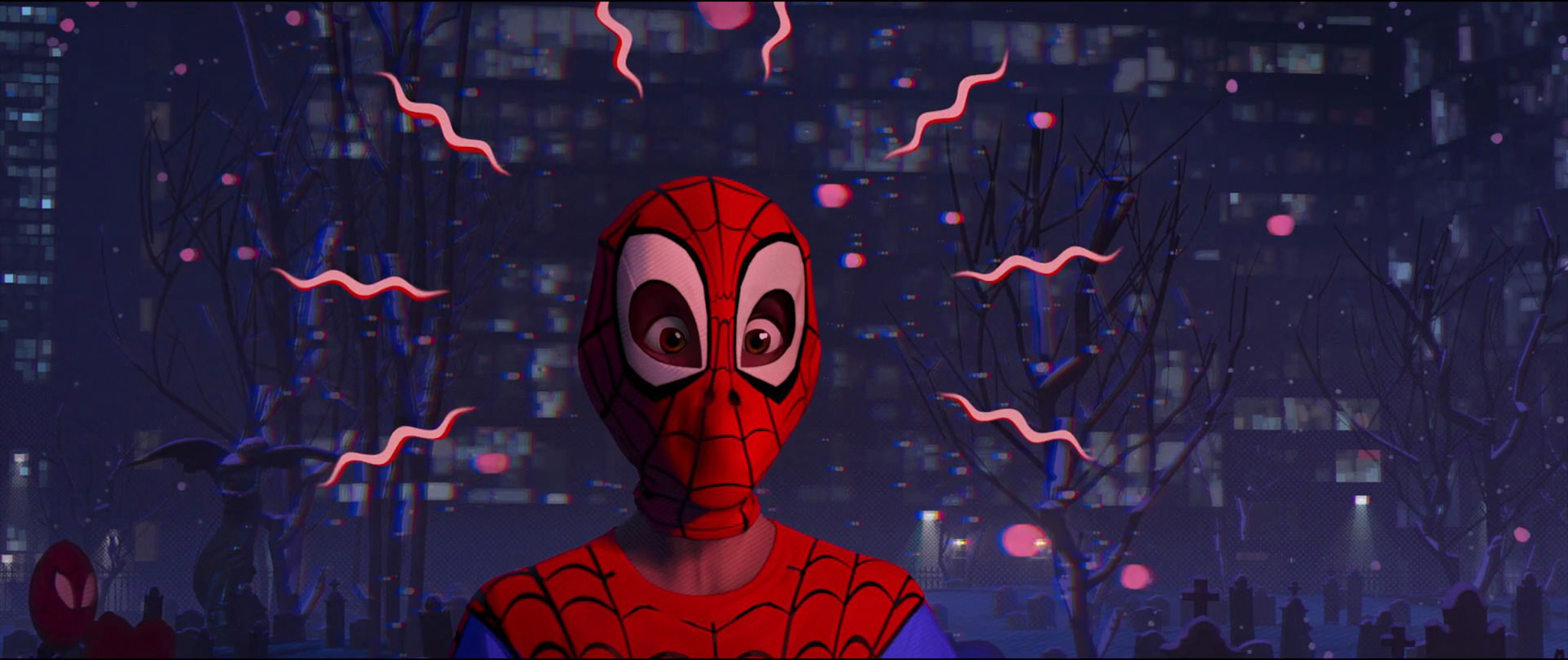
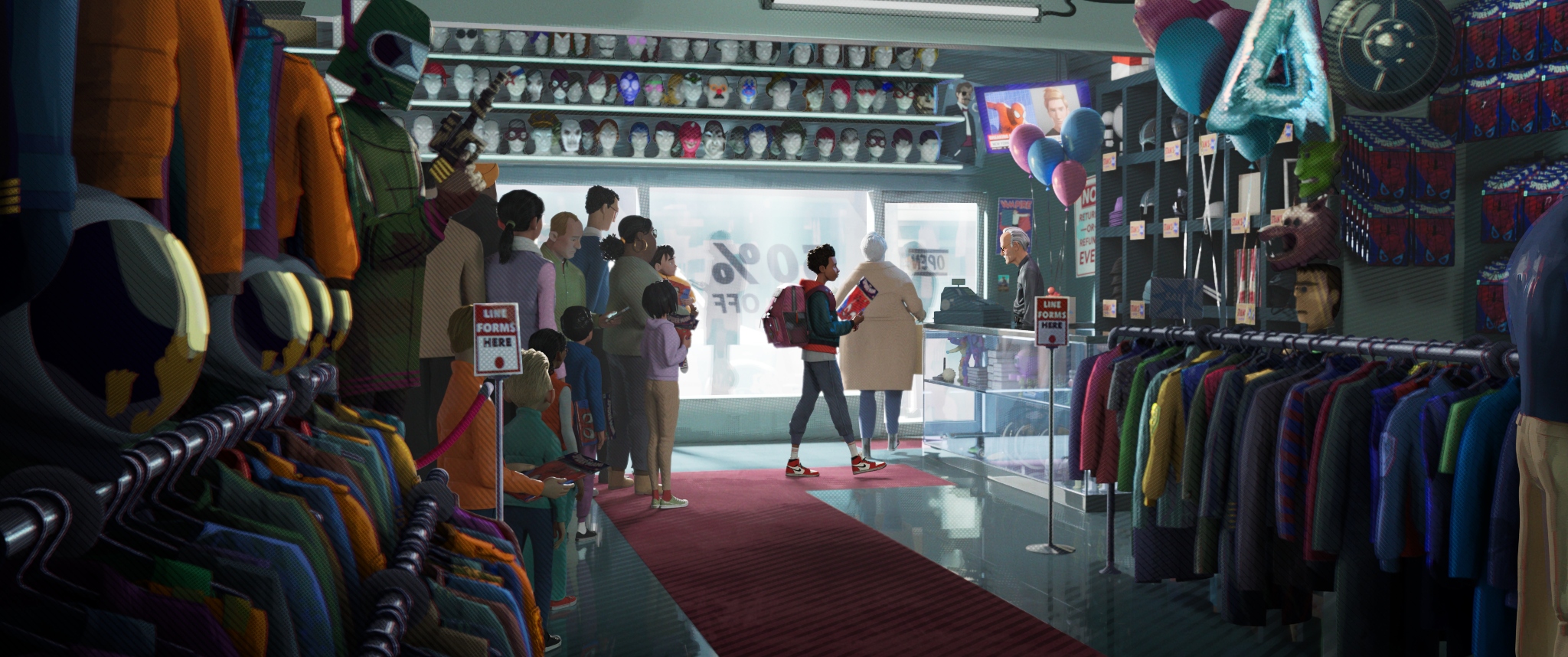
Animating On Twos
Traditional CG animated movie is blithe on ones -- 24 images, each held for ane frame, for every one second of film. In order to achieve the graphic and punchy fashion, blitheness broke from the convention and embraced stepped animation, or animating on twos. When animating on twos, every paradigm is held for two frames, with only 12 individual images used for every 1 second of film. The touch of animating on twos, especially for fast-paced action, provided the desired illustrated visual style for the pic, where each frame appeared equally its ain distinct epitome, like a console in a comic volume.
"Our big challenge was creating that balance between being cartoony and realistic. At Imageworks, we have an amazing robust pipeline, and I recollect we have forever contradistinct our pipeline cheers to this project."
- Josh Beveridge, Caput of Character Animation
To deliver the all-time representation of comic books brought to animated life, we had to break and overhaul our fashion of looking at things. It led us to frame modulation to get this slick, crispy version of popular art. When we make Spider-Man in alive action, it's hard to put Spider-Man in these fantastic comic volume poses because we had to deal with the world existent physics.
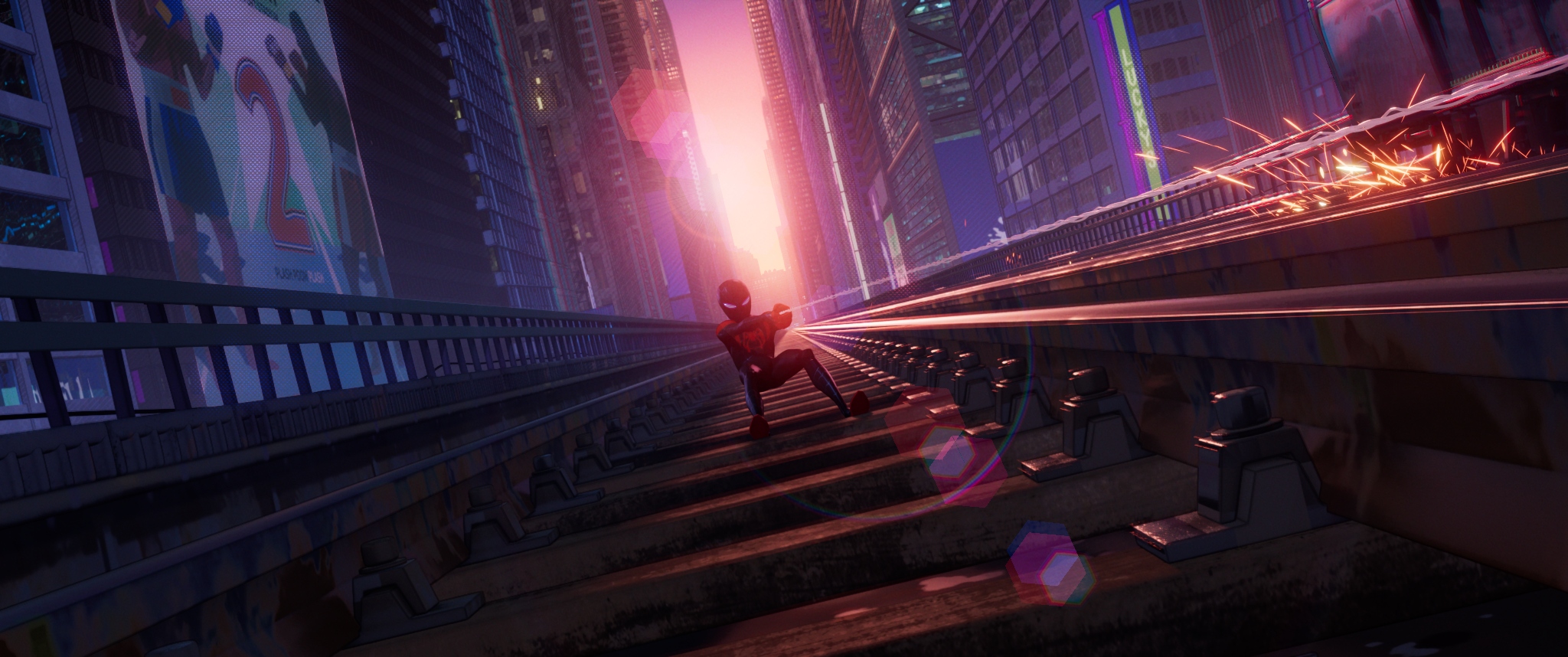
Unmarried "comic volume" panel frame holds were cutting into sequences. Comic book sound effects were incorporated into shots and comic panels fabricated out of webbing evidence montages and background action.
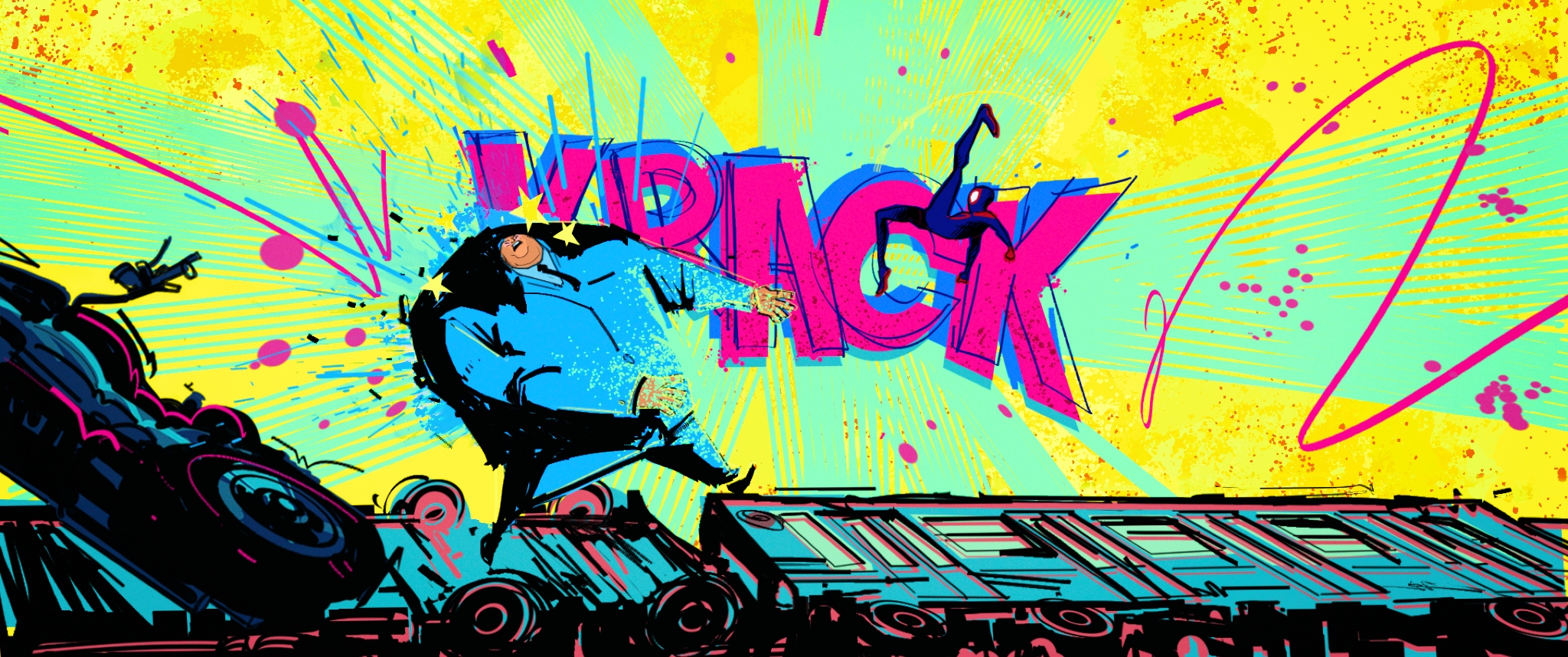
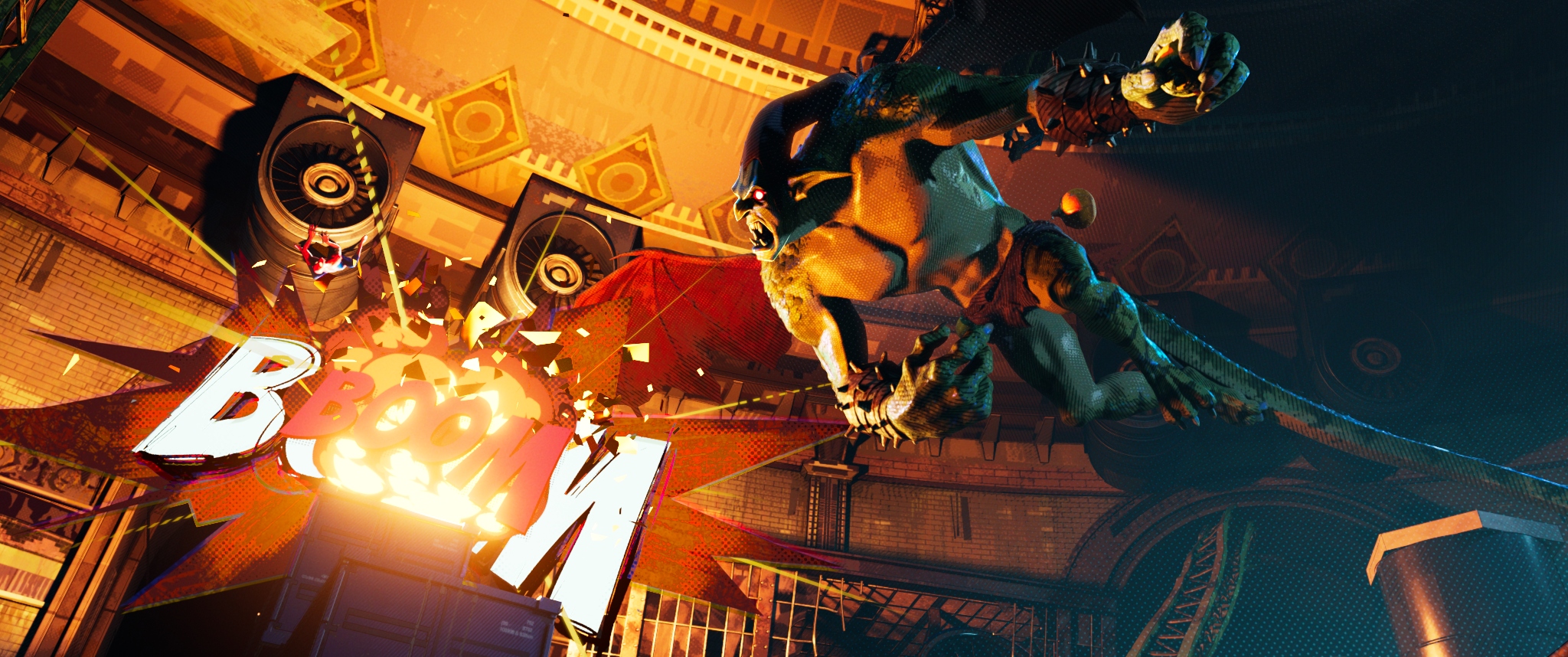
But blitheness allowed the team to pause physics. To brand information technology experience correct without having to exist limited past the restraints of reality. We worked hard to get the animation on twos to work both with simulations and circuitous photographic camera moves. We didn't want to be too choppy and non smooth. We wanted crisp pop with aggressive clarity.
A New Rendering Style
The final look of the film was besides inspired by comic book printing techniques and made liberal use of half-toning and line hatching. The Spider-Poesy isn't traditional CGI, merely rather a slew of new rendering styles mixed in with hand-fatigued elements.
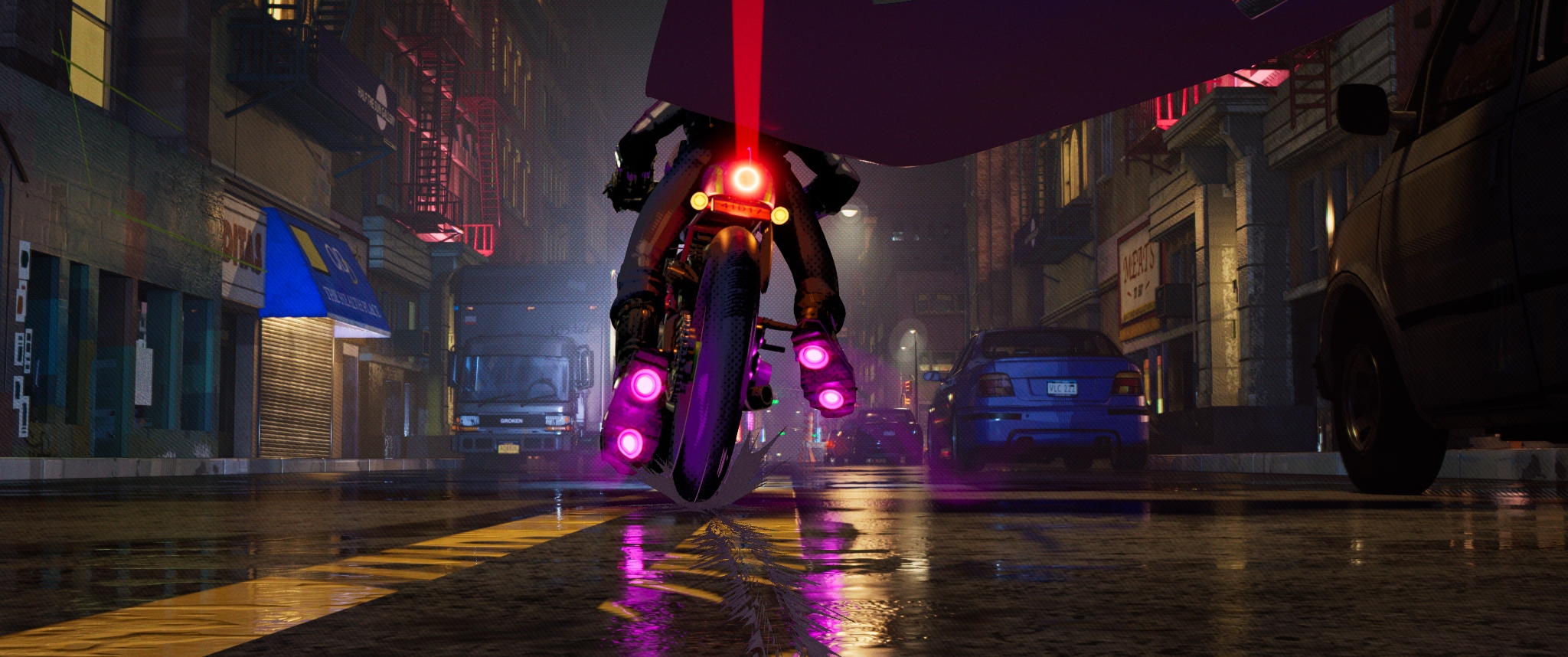
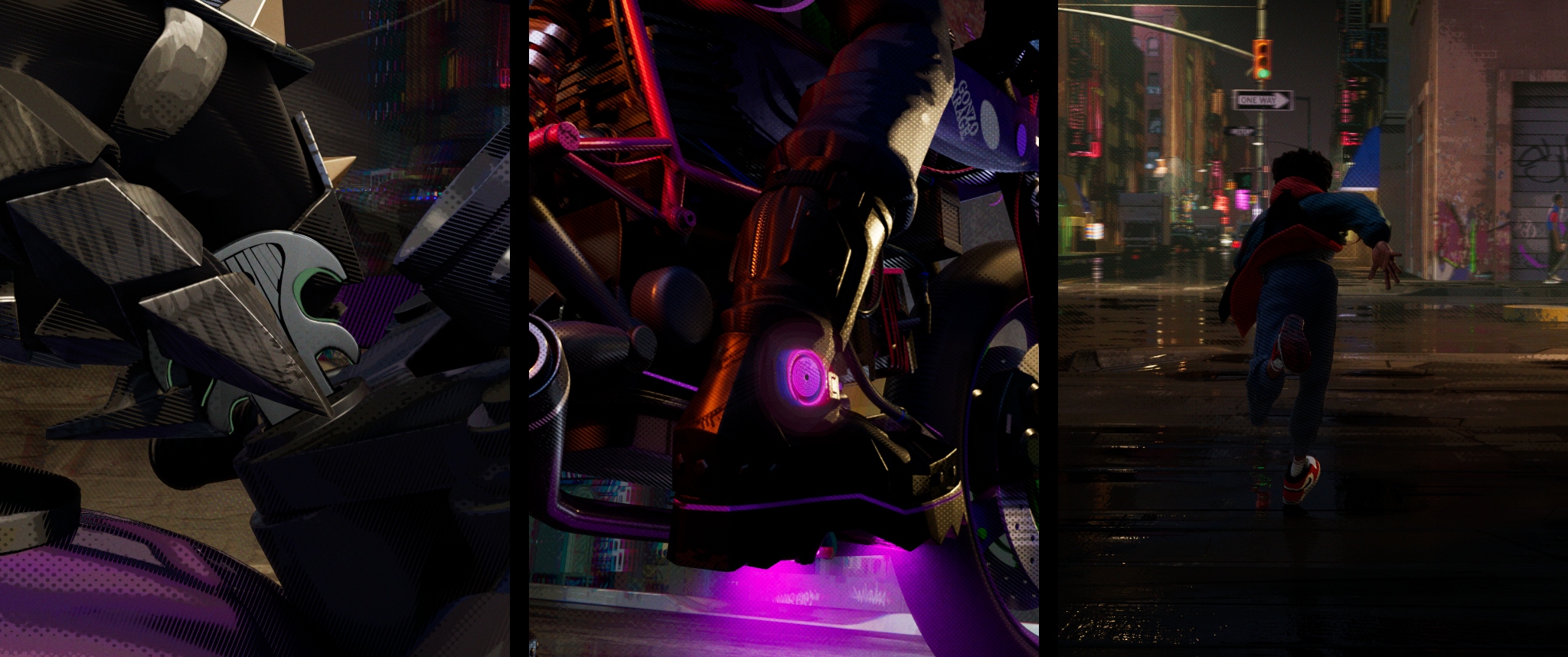
Some of the illustrative principles that went into the rendering and compositing include: graphic shapes, bold colors, stiff composition and simplified blueprint. The wait strives for the raw emotion of analogy. In this attempt, soft gradations are avoided in favor of halftoning and line hatching - again like to older comic book printing. The rendering of materials is also heavily stylized.
"We wanted the film to have a paw fatigued look considering one of the things that'due south really beautiful and interesting well-nigh illustration is a liberty to draw what is nearly emotional and impactful without being constrained by realism or what is correct."
- Danny Dimian, VFX Supervisor
Even the cinematography was reconsidered for the motion-picture show. Avoiding softness in the film meant avoiding using a traditional lens blur for the photographic camera focus and depth of field (DOF). One culling blazon of camera lens focus (or DOF) was inspired by the comic book showtime press procedure where the (ofttimes accidental) mis-registering of the color passes tin can make an image await out of focus.
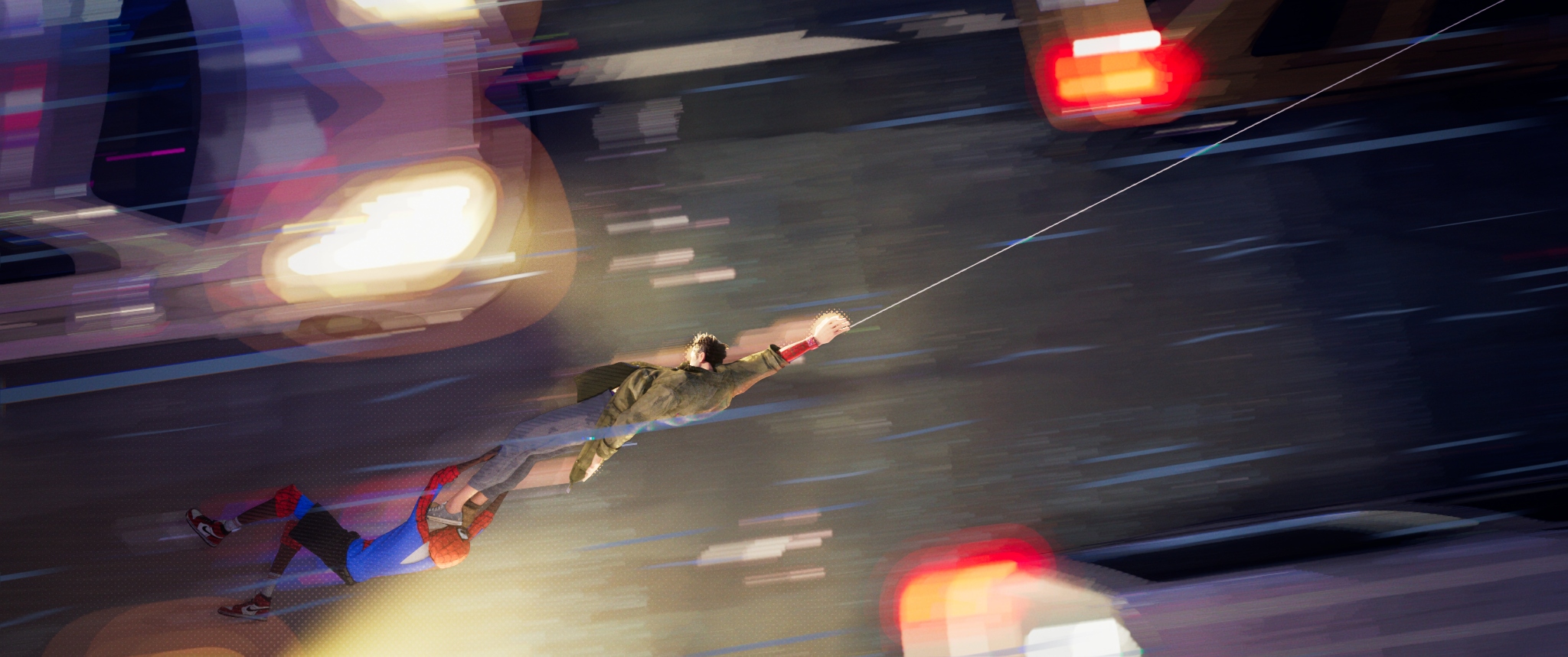
Our conclusion to avoid traditional motion blur meant that we would need to solve the strobing issues caused by fast move in other ways. The animation team helped solve strobing of fast moving characters using a mix of techniques including smearing the geometry, drawing speed lines and even the use of multiple character limbs.
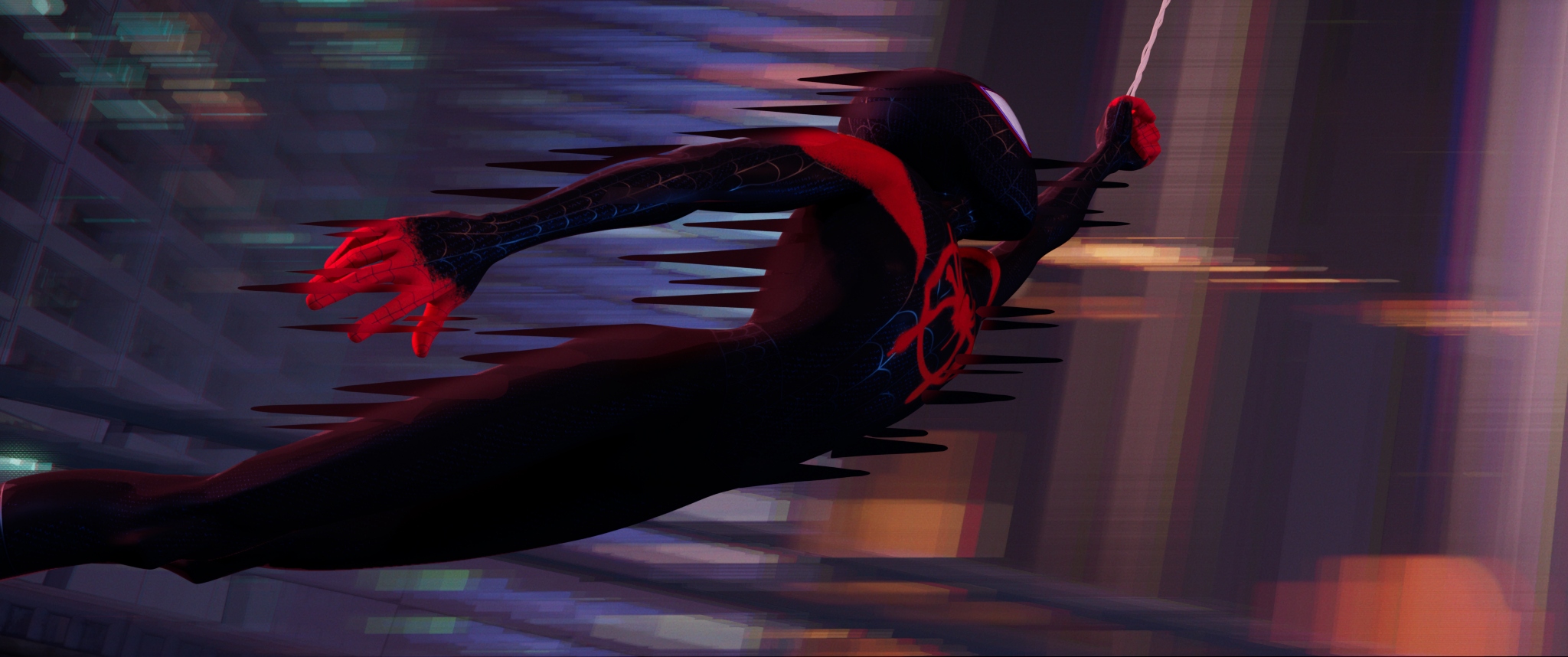
The FX team also added motion lines to fast moving objects and these speed streaks helped reduce the strobing effects while besides imparting an extra sense of speed.
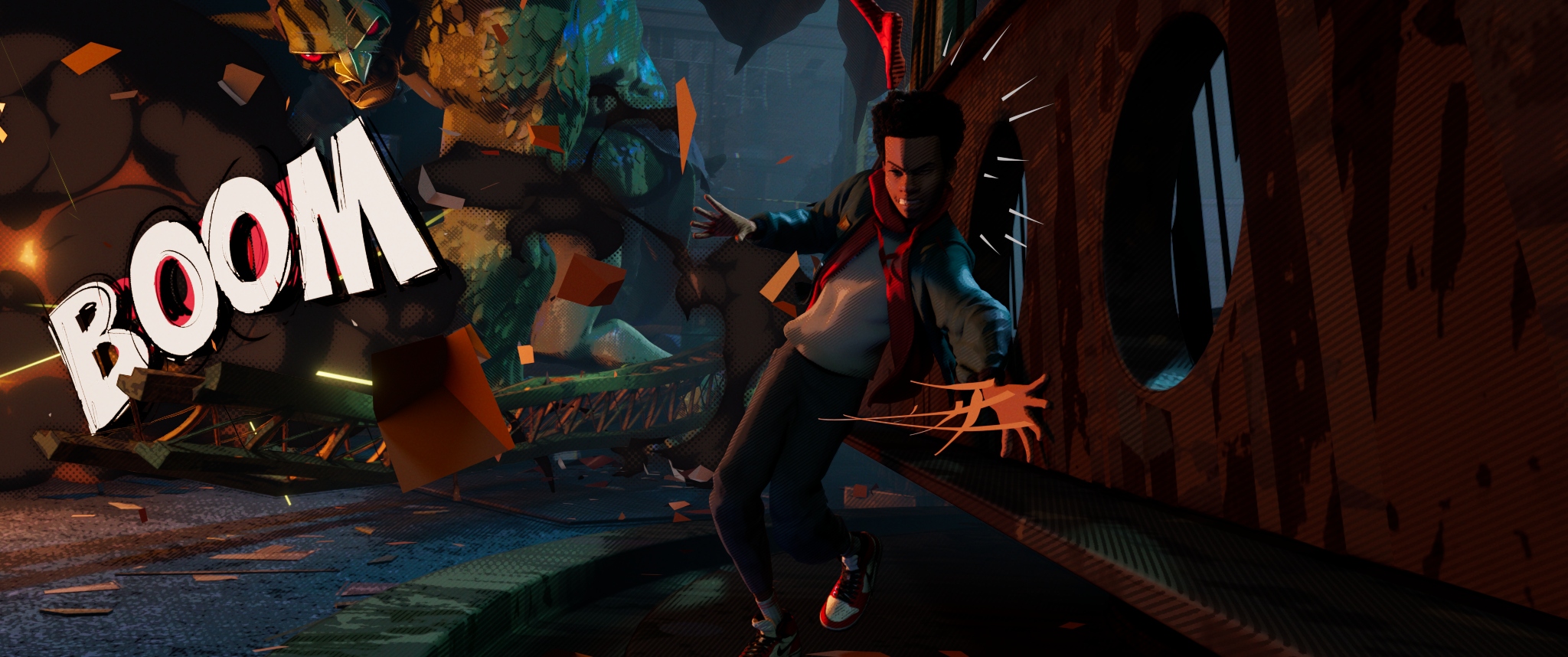
Designing FX
In keeping with the graphic, stylized expect of the film, even the FX section fabricated use of hand drawing techniques. Rather than relying solely on physically based simulations, the FX squad created a reusable library of 2nd hand fatigued FX elements frequently also animated on twos. These manus drawn elements were combined with traditional 3D simulations to create a distinctly illustrative feel for FX elements such as explosions and fire.
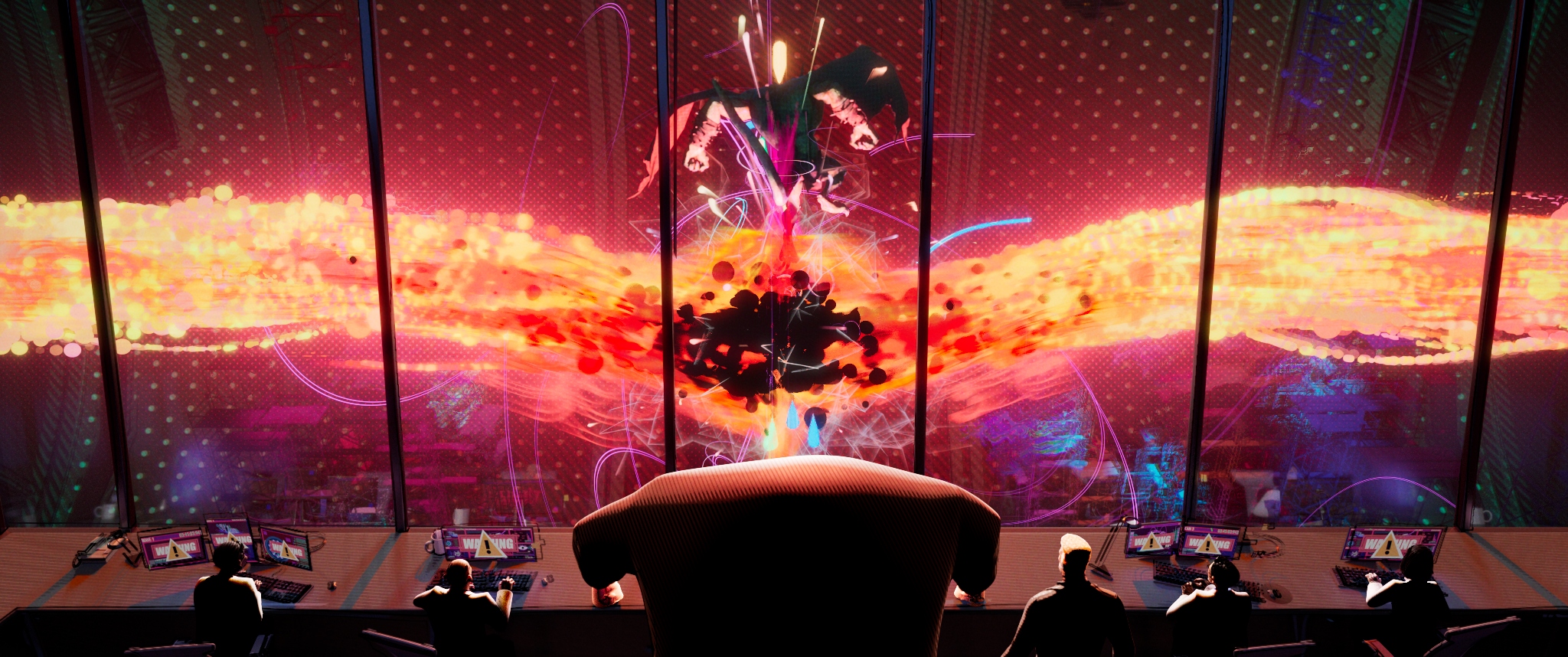
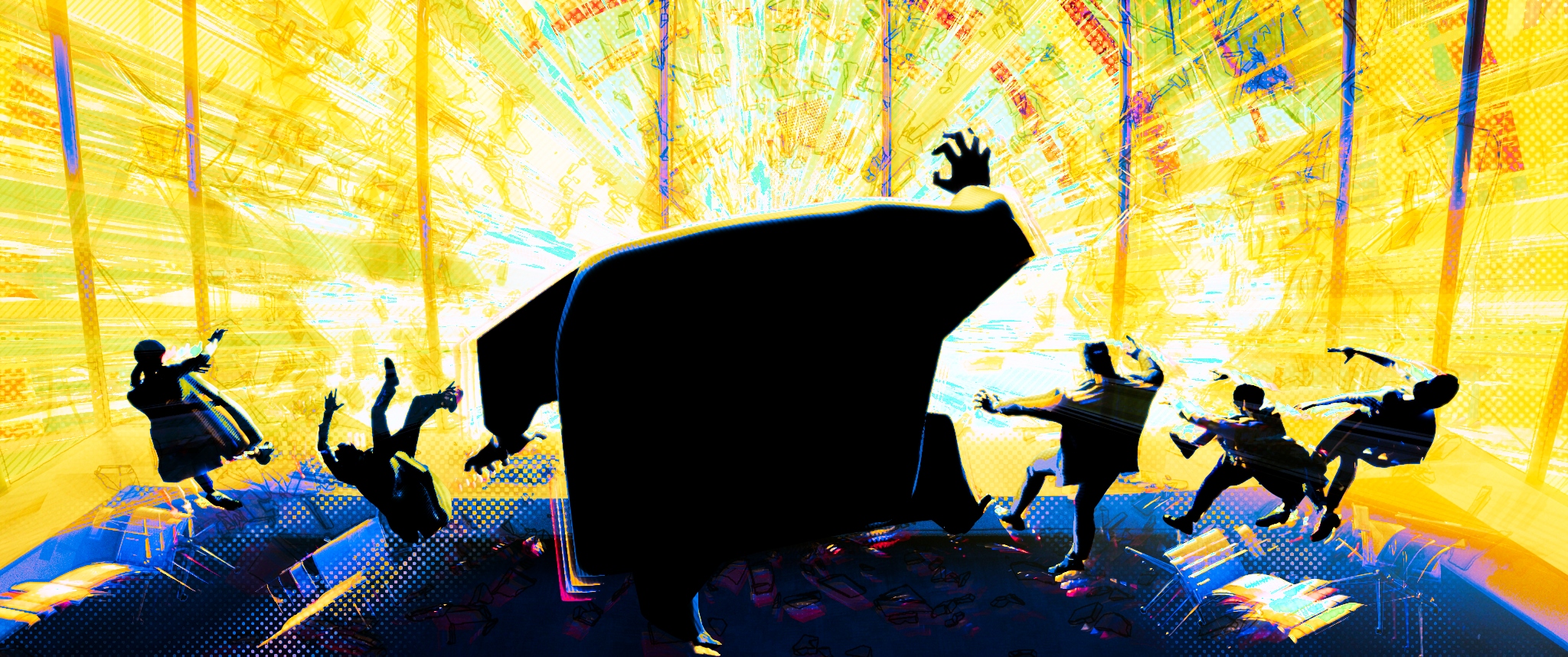
Another smashing example of stylized FX in the film is the multidimensional glitching effects the collider has unleashed past messing with the multiple Spider-Verses. To create this glitching effect, the animation is rendered through multiple camera angles and each is rendered with a unique wait. A screen infinite jail cell pattern is used to combine these multiple renders into a 3D fracturing of the Spider-Verses.
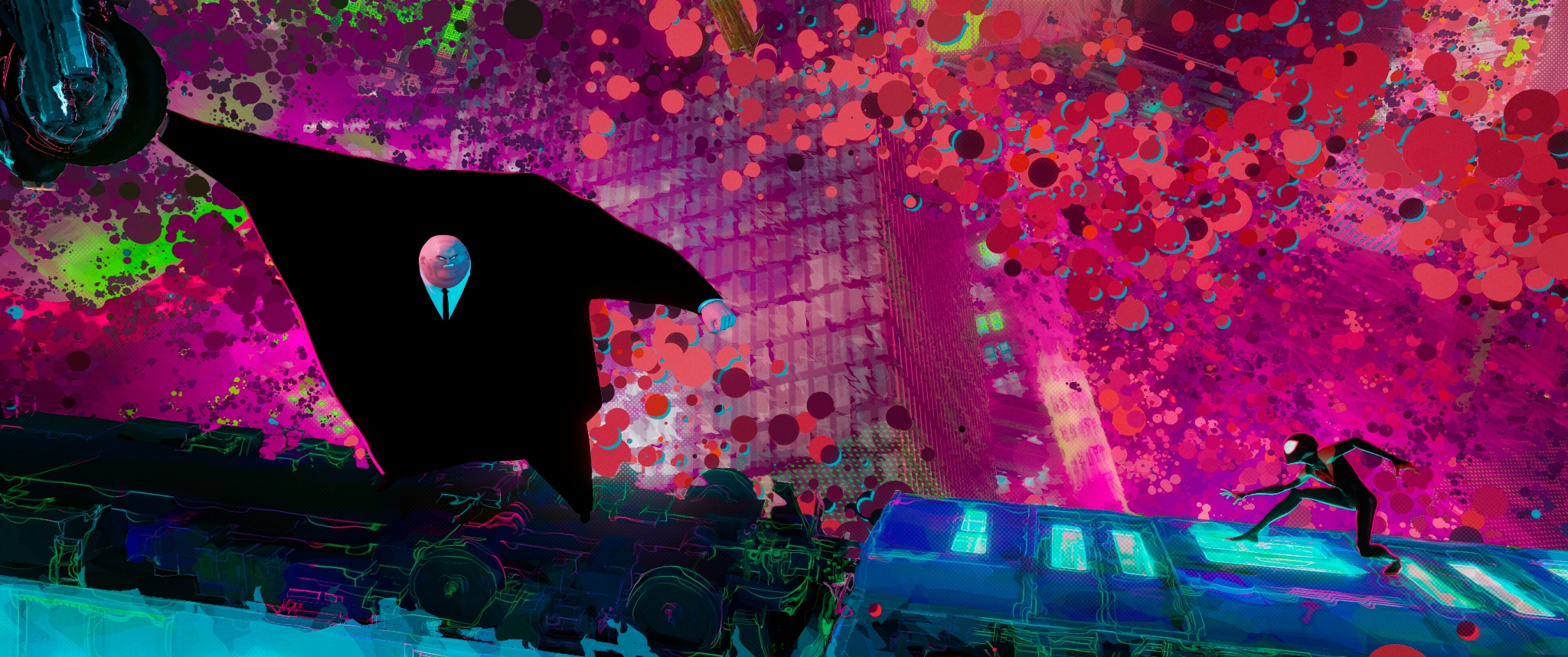
The overall comic book aesthetic of halftoning and hatching was carried over to the surround's besides. The nature of the new aesthetic required more collaboration among people working on different parts of the pipeline. The new techniques required much trial and fault, and many failed experiments savage past the wayside before the filmmakers found the groundbreaking look.
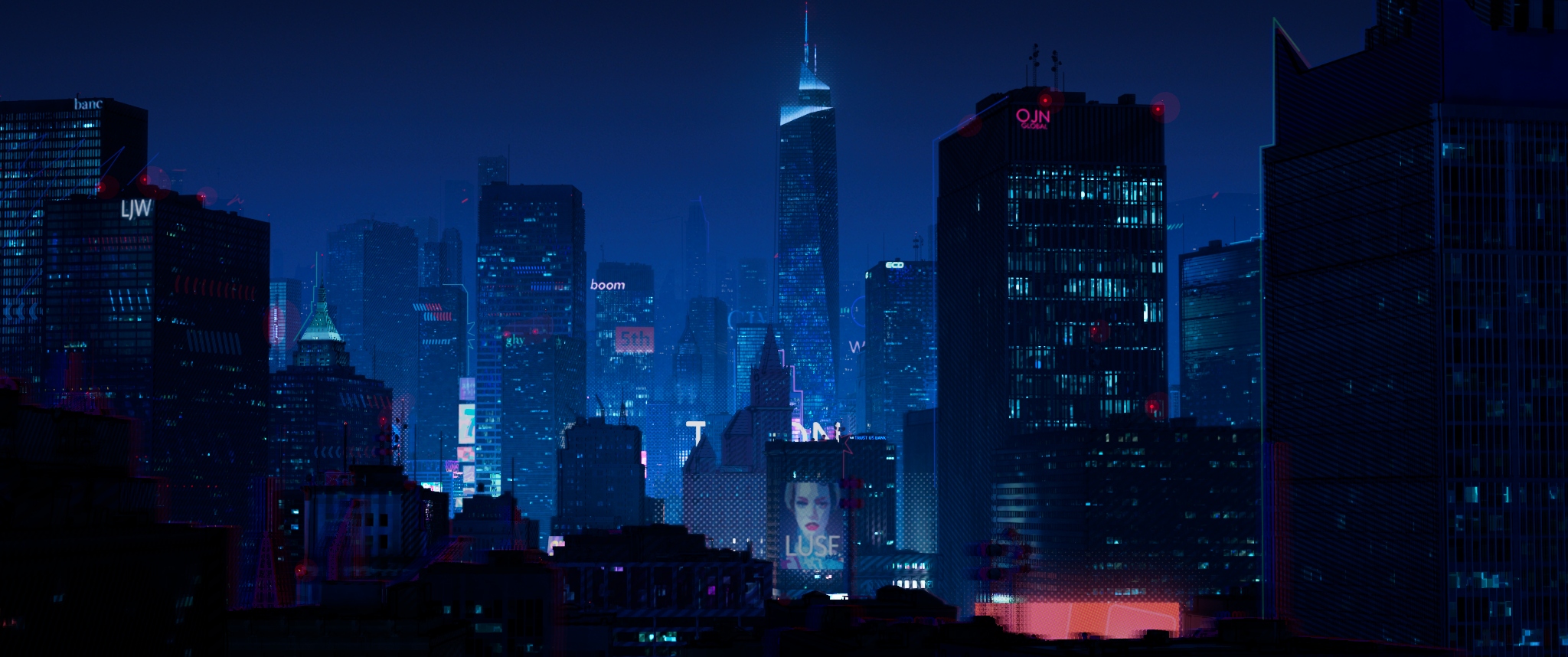
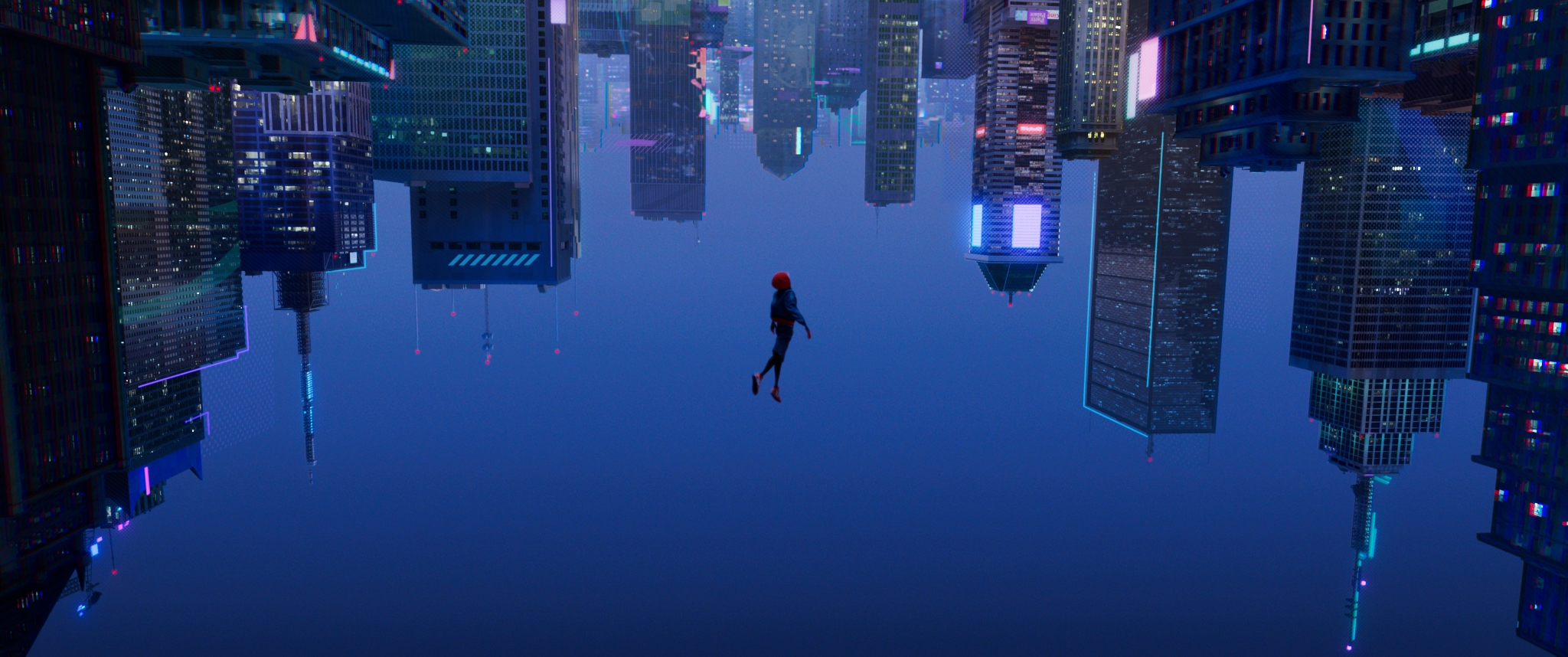
All the same Images
Source: https://www.imageworks.com/our-craft/feature-animation/movies/spider-man-spider-verse
Posted by: youngallind.blogspot.com


0 Response to "How To Draw Spiderman Into The Spider Verse"
Post a Comment